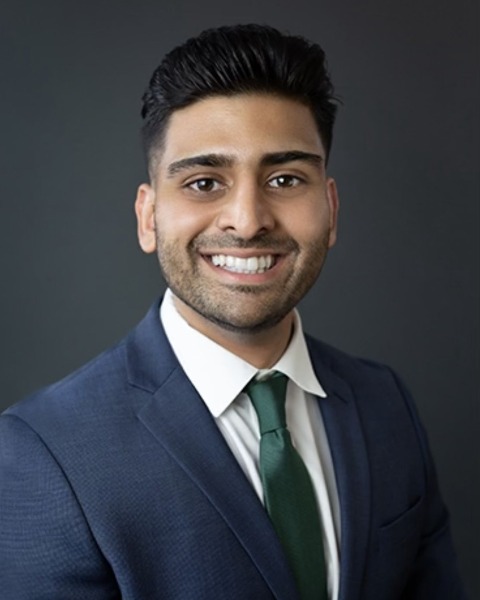Tuesday Poster Session
Category: Interventional Endoscopy
P4512 - An Unexpected Detour: Navigating Enteric Biliary Fistula in Endotherapeutics
Tuesday, October 29, 2024
10:30 AM - 4:00 PM ET
Location: Exhibit Hall E

Has Audio

Raahi Patel, DO
Franciscan Health Olympia Fields
Chicago, IL
Presenting Author(s)
Raahi Patel, DO1, Varshita Goduguchinta, DO2, Shil Punatar, DO2, Zohair Ahmed, MD2
1Franciscan Health Olympia Fields, Olympia Fields, IL; 2Franciscan Health Olympia Fields, Chicago, IL
Introduction: Early recognition and intervention with advancements in endoscopic retrograde cholangiopancreatography (ERCP) allows for mortality benefit in ascending cholangitis. Most routine ERCP are done by accessing the biliary tree through the major papilla found in the duodenum. With this case, we highlight unique and lesser documented anatomical variations, specifically a choledochoduodenal fistula and subsequent approach to endoscopic treatment of ascending cholangitis.
Case Description/Methods: The patient is a 81-year-old male with past medical history of fluctuating bilirubin elevations for nearly 2 years, recent cholecystectomy, and persistent atrial fibrillation who presented with complaints of shortness of breath and epigastric abdominal pain for several days.
Remarkable labs included total ALP of 221, AST 252, ALT 120, total bilirubin of 3.0, lactic acid of 3.2 and WBC of 11.58. CT Chest/Abdomen/Pelvis revealed pulmonary emphysema and CBD dilation. Gastroenterology was consulted at that time. A rapid response was called shortly thereafter for hypotension (80/45) and bradycardia. Patient was emergently taken for ERCP given concern for cholangitis. During the ERCP, a fistulous tract was found while entering through the papilla, which was used as the site during the intervention. There were numerous attempts made in trying to access the common bile duct (CBD) through the papilla however each attempt led to the fistulous tract. Through this tract, a diverticulum was found that allowed access to the CBD. The CBD was cannulated, a balloon sweep was performed and copious amounts of pus, sludge, and two stones were extracted via the fistulous tract. A plastic biliary stent was placed at that time. The patient's overall condition steadily improved following the intervention.
Discussion: The incidence of biliary enteric fistula is 0.9% during surgery. Our case discusses a unique communication identified between the CBD and the duodenum, consistent with a choledochoduodenal fistula which was used as the site for intervention during ERCP. The formation of the fistula may be secondary to multifactorial causes including previous cholecystectomy through iatrogenic injuries, spontaneous formation of fistulas and non-iatrogenic fistulas seen with cholelithiasis or choledocholithiasis. We hope to highlight the considerations of fistula formation as sequelae to cholecystectomy, adding the notions of anatomical variants in cholangitis, and alternative methods of intervention using ERCP to medical literature.
Disclosures:
Raahi Patel, DO1, Varshita Goduguchinta, DO2, Shil Punatar, DO2, Zohair Ahmed, MD2. P4512 - An Unexpected Detour: Navigating Enteric Biliary Fistula in Endotherapeutics, ACG 2024 Annual Scientific Meeting Abstracts. Philadelphia, PA: American College of Gastroenterology.
1Franciscan Health Olympia Fields, Olympia Fields, IL; 2Franciscan Health Olympia Fields, Chicago, IL
Introduction: Early recognition and intervention with advancements in endoscopic retrograde cholangiopancreatography (ERCP) allows for mortality benefit in ascending cholangitis. Most routine ERCP are done by accessing the biliary tree through the major papilla found in the duodenum. With this case, we highlight unique and lesser documented anatomical variations, specifically a choledochoduodenal fistula and subsequent approach to endoscopic treatment of ascending cholangitis.
Case Description/Methods: The patient is a 81-year-old male with past medical history of fluctuating bilirubin elevations for nearly 2 years, recent cholecystectomy, and persistent atrial fibrillation who presented with complaints of shortness of breath and epigastric abdominal pain for several days.
Remarkable labs included total ALP of 221, AST 252, ALT 120, total bilirubin of 3.0, lactic acid of 3.2 and WBC of 11.58. CT Chest/Abdomen/Pelvis revealed pulmonary emphysema and CBD dilation. Gastroenterology was consulted at that time. A rapid response was called shortly thereafter for hypotension (80/45) and bradycardia. Patient was emergently taken for ERCP given concern for cholangitis. During the ERCP, a fistulous tract was found while entering through the papilla, which was used as the site during the intervention. There were numerous attempts made in trying to access the common bile duct (CBD) through the papilla however each attempt led to the fistulous tract. Through this tract, a diverticulum was found that allowed access to the CBD. The CBD was cannulated, a balloon sweep was performed and copious amounts of pus, sludge, and two stones were extracted via the fistulous tract. A plastic biliary stent was placed at that time. The patient's overall condition steadily improved following the intervention.
Discussion: The incidence of biliary enteric fistula is 0.9% during surgery. Our case discusses a unique communication identified between the CBD and the duodenum, consistent with a choledochoduodenal fistula which was used as the site for intervention during ERCP. The formation of the fistula may be secondary to multifactorial causes including previous cholecystectomy through iatrogenic injuries, spontaneous formation of fistulas and non-iatrogenic fistulas seen with cholelithiasis or choledocholithiasis. We hope to highlight the considerations of fistula formation as sequelae to cholecystectomy, adding the notions of anatomical variants in cholangitis, and alternative methods of intervention using ERCP to medical literature.
Disclosures:
Raahi Patel indicated no relevant financial relationships.
Varshita Goduguchinta indicated no relevant financial relationships.
Shil Punatar indicated no relevant financial relationships.
Zohair Ahmed indicated no relevant financial relationships.
Raahi Patel, DO1, Varshita Goduguchinta, DO2, Shil Punatar, DO2, Zohair Ahmed, MD2. P4512 - An Unexpected Detour: Navigating Enteric Biliary Fistula in Endotherapeutics, ACG 2024 Annual Scientific Meeting Abstracts. Philadelphia, PA: American College of Gastroenterology.
